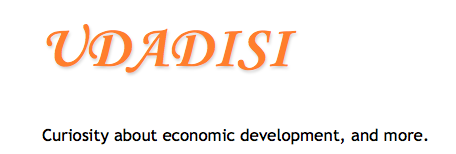I still remember
the hot weather, the sticky sweat, and the sense of danger, when I was biking the
streets of Accra on my way to buy my first Mac. Yes, I bought it in West
Africa. There was something nerdy, artsy, unorthodox, and cool about it. It was a $ 1,400 toy, a good chunk of my semester salary.
Before entering the store I left the
bike with a street vendor, begging him to take care of it, it was my
only means of transportation in the city. I bought the white mac and a red backpack. Riding the bike with the Mac in the back was
epic. The musty and hot air of the Golf of Guinea, and the heavy traffic of Accra make bike riding a pretty out-of-place, but not less exciting, event.
It was shocking
however to see the next day that there was an awful, perfectly vertical line,
crossing the screen of the Mac, and it stayed there no matter what. Fortunately
people at the store changed the screen in only half an hour, leaving it neat.
And this was Ghana where things were not supposed to be done that fast. But it
was an Apple store and that made all the difference.
Finding the Mac
in Accra was not that easy though, especially if you wanted it immediately,
like I did. Previously, I had crossed the city by tro-tro
looking for one of the Apple stores listed in the phone book. The place was far away, in the suburbs of the city, close to a train line. The store was on a
dusty road. The building was not finished, and the air was very heavy. There
seemed to be dust on the tables. But there was something really cool about the place.
Everybody had a Macdesktop. The Macs were of a light blue color, almost transparent.
A heavy mean, the manager, told me that they only had desktops and the latest,
and more expensive, Macbook. I did not buy it. On my way home I kept
thinking about this technology compound Mac-only place in the Golf of Guinea.
Why some of us
wanted the apple products so badly. The reliability, effectiveness, etc, are
well talked about. But Steve Jobs was also a master of marketing, the creator
of a product that sells itself. He appealed to people’s desire to be
different. His secret of marketing focused specifically on creating a product
that didn’t need to be advertised. And this was probably the key to his
success. Very few people in the world have Jobs' meticulousness. He said:
When you're a carpenter making a beautiful chest of drawers, you're not going to use a piece of plywood on the back, even though it faces the wall and nobody will ever see it.
His most important
legacy still is what we do not see.
Steve Jobs was a man
who had his 10,000 hours, using Malcom Gladwell lingo. When inspiration came,
he had done his homework. Think for example on his calligraphic training, the
genesis of the Mac aesthetics. His timing in history was perfect, only matched
by Bill Gates, and few fortunate others. The Mac was what the economic
historian Joel Mokyr calls a macro-invention, meaning those innovations that
have very few or no precedent. The Mac as well as the personal computer were
at the core of the Solow residual, as theorists of economic growth call new
creations that drive long term rates of income per capita. Indeed the computer
constitutes the nucleus the information revolution.
Back to Accra. My new Mac had to pass one if its most important
test. It happened when I was riding the bike in the Labone neighborhood. The
breeze from the sea was fresh, the afternoon sunlight on the walls was orange,
and the reggae music was smooth. There were some beautiful Ghanaian
ladies by the road watching the obruni ride with gusto. Almost nothing could go wrong. But something did. When I realized I was with my face right on the
asphalt. There was a problem with the chain of the bike . . . it was embarrassing,
but the Mac was OK.

No comments:
Post a Comment